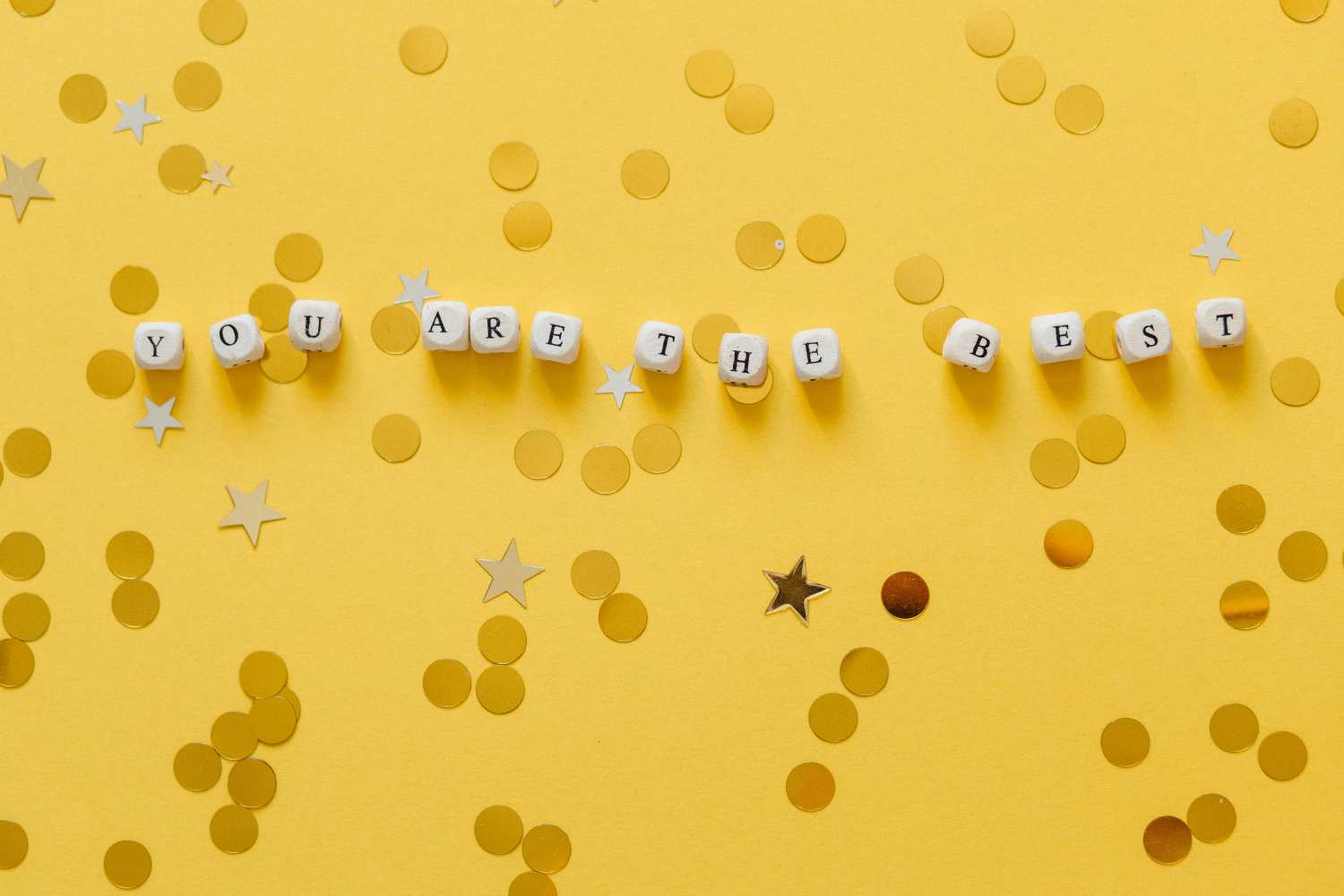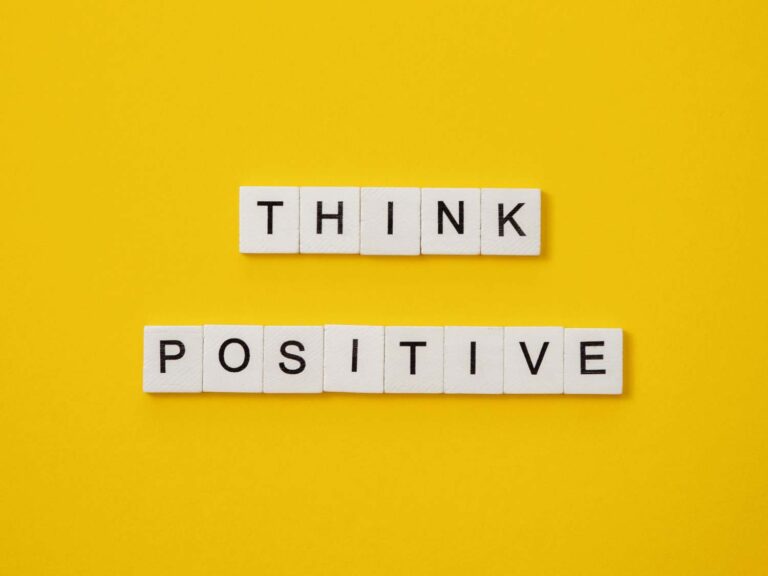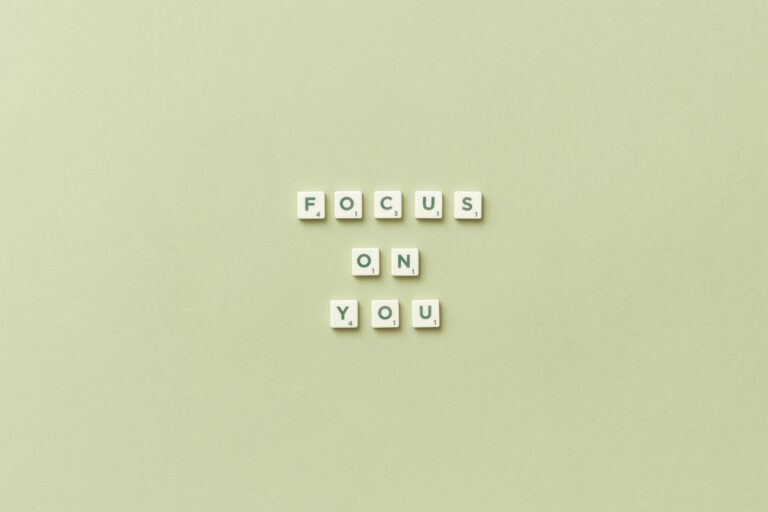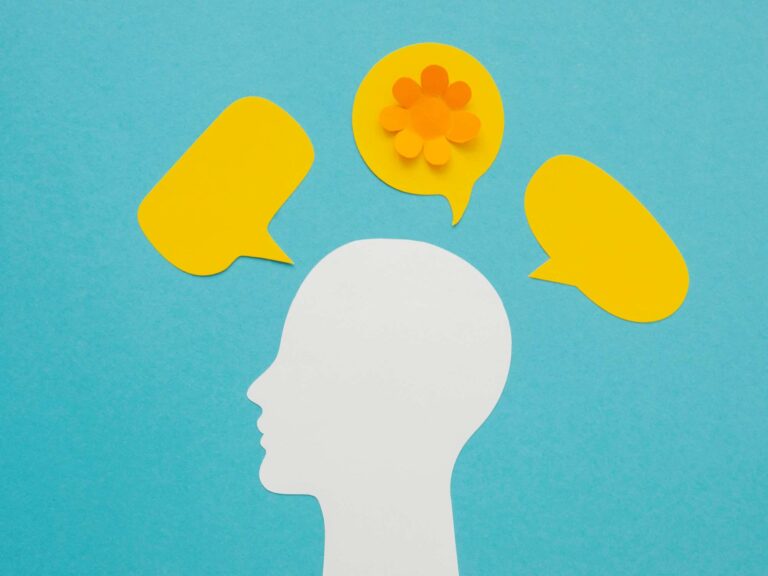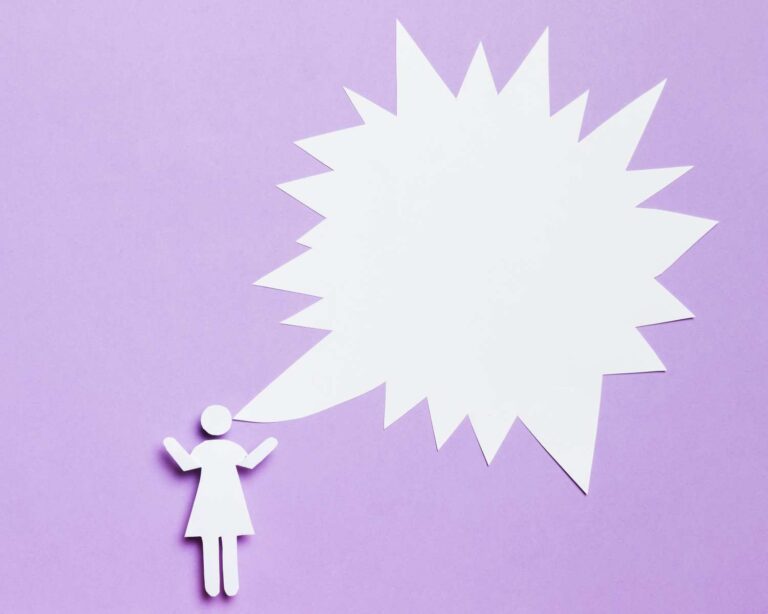Your inner cheerleader: Creating an inner voice that empowers you
Picture this: You make a mistake at work and immediately hear a voice in your head saying “You’re so stupid. Of course you messed this up. You always do this.”
Now imagine instead hearing: “That didn’t go as planned. What can you learn from this? How can you handle it differently next time?”
Both voices are yours. But only one serves you.
The voice in your head isn’t some mystical force beyond your control. It’s a habit you’ve developed over years, shaped by criticism you’ve heard, fears you’ve adopted, and standards you’ve internalized. And like any habit, it can be changed.
Your inner voice is either your greatest ally or your worst enemy. There’s no neutral ground. Every day, it’s either building you up or tearing you down, encouraging you forward or holding you back, helping you see possibilities or keeping you stuck in limitations.
The question isn’t whether you have an inner voice – everyone does. The question is: what kind of voice have you been cultivating, and is it the voice you want guiding your life?
The cost of a destructive inner voice
Before we talk about building your inner cheerleader, let’s be honest about what a harsh inner critic actually costs you.
It kills your confidence before you even try. When your default internal response to new opportunities is “You’ll probably fail” or “You’re not qualified enough,” you stop reaching for things you actually want. You play small not because you lack ability, but because you’ve trained your mind to focus on why things won’t work. Understanding why you’re so hard on yourself is the first step toward developing a kinder inner voice.
It makes recovery from setbacks take forever. Everyone faces rejection, makes mistakes, and experiences disappointment. But while some people bounce back quickly, others spiral into weeks of self-blame and doubt. The difference isn’t the setback itself – it’s how you talk to yourself about it.
It steals your energy for what matters. When you’re constantly fighting an internal battle against your own thoughts, you have less mental energy for creativity, problem-solving, and pursuing your goals. Self-criticism is exhausting, and exhausted people don’t do their best work.
It affects how others see you. Your relationship with yourself shows up in how you present yourself to the world. People who speak kindly to themselves tend to be more confident, more willing to take risks, and more resilient in the face of challenges.
It becomes a self-fulfilling prophecy. If you consistently tell yourself you’re not good enough, not smart enough, not worthy enough, you start making choices that align with those beliefs. You don’t apply for the job, don’t ask for what you want, don’t set boundaries you need. Your inner critic doesn’t just predict failure – it creates it.
The cost isn’t just emotional. It’s practical. Your inner voice shapes every decision you make, every risk you take or don’t take, every goal you pursue or abandon. It’s the difference between a life of possibility and a life of limitation.
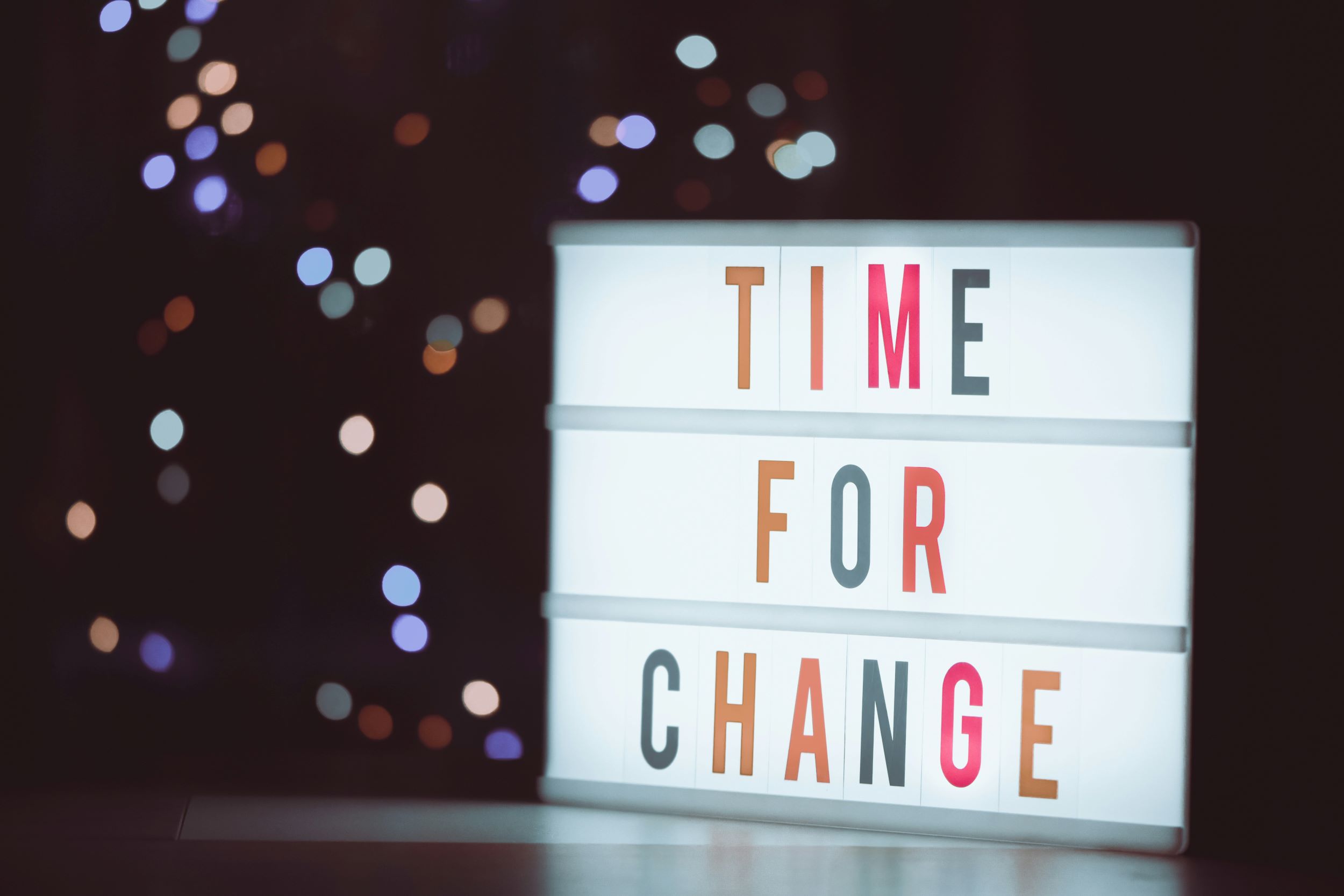
The anatomy of your current inner voice
Most people never consciously examine their inner voice. They just assume whatever thoughts pop up are true, necessary, or helpful. But your inner voice has patterns, sources, and purposes that are worth understanding.
Where did your inner voice come from?
Your current inner voice is a collection of voices you’ve heard throughout your life:
- The parent who said “Be careful” so often that you now approach everything with anxiety.
- The teacher who focused on what you got wrong instead of what you got right.
- The coach who believed harsh criticism motivated better performance.
- The friend who bonded with you through self-deprecating humor.
- The culture that taught you your worth depended on your achievements.
- The media that showed you all the ways you don’t measure up.
None of these people or influences necessarily intended to create a harsh inner critic in your mind. But over time, you internalized these external voices and they became your default way of talking to yourself.
What does your inner critic actually think it’s doing?
Most inner critics believe they’re protecting you. They think that by pointing out everything that could go wrong, they’re preventing disappointment. They think that by setting impossibly high standards, they’re motivating you to be your best. They think that by preparing you for criticism from others, they’re saving you from pain.
But protection that prevents you from living isn’t protection – it’s prison.
What patterns does your inner voice follow?
Pay attention to your inner voice for a day and you’ll notice it has favorite phrases, common triggers, and predictable responses:
- Does it catastrophize? (“This one mistake will ruin everything.”)
- Does it compare? (“Everyone else is better at this than you.”)
- Does it shame? (“You should be ashamed of yourself!”)
- Does it minimize? (“That success was just luck.”)
- Does it fortune tell? (“You’ll never be able to do this.”)
Understanding these patterns is the first step to changing them. You can’t transform a voice you don’t recognize. Check which everyday habits reinforce negative self talk without you even realizing it.
What an inner cheerleader actually sounds like
An inner cheerleader isn’t a fake positive voice that pretends everything is wonderful. That’s toxic positivity, and it’s just as unhelpful as constant criticism.
A true inner cheerleader is honest but supportive, realistic but encouraging, clear-eyed but compassionate. It’s the voice of a wise friend who wants the best for you and believes in your ability to handle whatever comes your way.
Instead of harsh judgment, it offers perspective:
- Inner critic: “You’re so stupid for making that mistake.”
- Inner cheerleader: “That mistake was frustrating, but it doesn’t define you. What can you learn from it?”
Instead of catastrophizing, it stays grounded:
- Inner critic: “This failure means you’ll never succeed at anything.”
- Inner cheerleader: “This didn’t work out the way you hoped. That’s disappointing, but it’s not the end of the story.”
Instead of comparison, it focuses on your unique path:
- Inner critic: “Look how much better everyone else is doing.”
- Inner cheerleader: “You’re on your own timeline. Focus on your progress, not their highlight reel.”
Instead of perfection, it celebrates progress:
- Inner critic: “It’s not good enough yet.”
- Inner cheerleader: “Look how far you’ve come. Each step is moving you in the right direction.”
Instead of fear-based thinking, it encourages courage:
- Inner critic: “Don’t try that. You’ll probably fail.”
- Inner cheerleader: “This feels scary because it matters to you. You can handle whatever happens.”
An inner cheerleader doesn’t lie to you or set you up for disappointment. It simply speaks to you the way you would speak to someone you love who’s going through exactly what you’re going through.

Building your inner cheerleader: A different approach
Most advice about changing your inner voice focuses on stopping negative thoughts or replacing them with positive ones. But trying to control your thoughts directly often backfires – the more you fight a thought, the stronger it becomes.
Instead, we’re going to use a different approach: We’re going to build a distinct, recognizable inner cheerleader voice that can coexist with your inner critic. Over time, as you strengthen this cheerleader voice, it will naturally become more prominent than the critical voice.
Think of it like this: Right now, your inner critic has had years to develop and practice. It’s loud, fast, and automatic. Your inner cheerleader is probably much quieter and less developed. But with intentional practice, you can train your cheerleader voice to be just as quick and automatic as your critic.
Phase 1: Meet your inner cheerleader
Before you can strengthen your inner cheerleader, you need to know what it sounds like. This voice might be very quiet right now, but it’s there.
Exercise: The best friend test
Think of a good friend who’s going through exactly what you’re going through right now. They’re facing the same challenges, dealing with the same fears, working toward similar goals.
Write down what you would say to this friend if they told you:
- “I’m worried I’m not good enough for this job.”
- “I made a big mistake and I feel terrible.”
- “I don’t think I’ll ever figure this out.”
- “Everyone else seems to have their life together except me.”
- “I’m afraid to try because I might fail.”
Notice the tone you use with your friend. Notice the words you choose. Notice the encouragement, perspective, and compassion that comes naturally when you’re supporting someone you care about.
This voice you use with your friend? That’s your inner cheerleader. It already exists. You just need to learn to turn it toward yourself.
Exercise: Identify your cheerleader’s characteristics
Your inner cheerleader has distinct qualities that make it different from your inner critic. Spend some time identifying what these are for you:
- What tone does your cheerleader use? (Gentle, encouraging, steady, warm?)
- What kinds of words does it choose? (Supportive, realistic, hopeful?)
- How does it handle mistakes? (With understanding, learning focus, forgiveness?)
- How does it motivate you? (Through encouragement, possibility, self-compassion?)
- What does it believe about you? (That you’re capable, worthy, growing?)
Write these characteristics down. You’re creating a profile of your inner cheerleader so you can recognize and strengthen this voice.
Phase 2: Practice daily cheerleader check-ins
Just like building physical strength requires regular exercise, building your inner cheerleader requires consistent practice. But we’re going to start small and build gradually.
The morning cheerleader practice
Each morning, before you check your phone or start your day, spend 2 minutes having your inner cheerleader speak to you about the day ahead.
Your cheerleader might say something like:
- “Today is a new day with new possibilities.”
- “You don’t have to be perfect, just present.”
- “You’ve handled hard days before, and you can handle today.”
- “Focus on progress, not perfection.”
- “You’re exactly where you need to be right now.”
Keep it simple and genuine. Don’t force positivity that doesn’t feel real. Your cheerleader should sound like encouragement, not like lies.
The evening reflection practice
Each evening, let your inner cheerleader reflect on your day:
- What did you handle well today?
- What progress did you make, even if it was small?
- What can you learn from the challenging moments?
- What are you proud of yourself for today?
- How did you grow or show courage today?
The goal isn’t to convince yourself you had a perfect day. It’s to help your brain notice the positive aspects of your experience that your inner critic usually ignores.
The real-time intervention practice
This is the most challenging but most important practice – catching your inner critic in the moment and having your cheerleader respond. This practical guide to positive self talk provides additional techniques for developing supportive inner dialogue.
When you notice harsh self talk, don’t try to stop it. Instead, immediately follow it with your cheerleader’s voice:
Inner critic: “You’re so awkward in social situations.”
Inner cheerleader: “That conversation felt uncomfortable, but you showed up and participated. That takes courage.”
Inner critic: “You’ll never be successful.”
Inner cheerleader: “Success takes time, and you’re making progress even when you can’t see it.”
Inner critic: “You always mess things up.”
Inner cheerleader: “You make mistakes like everyone else, and you learn from them. That’s how you grow.”
At first, your cheerleader’s voice might feel forced or fake. That’s normal. Like any new skill, it takes practice before it feels natural.
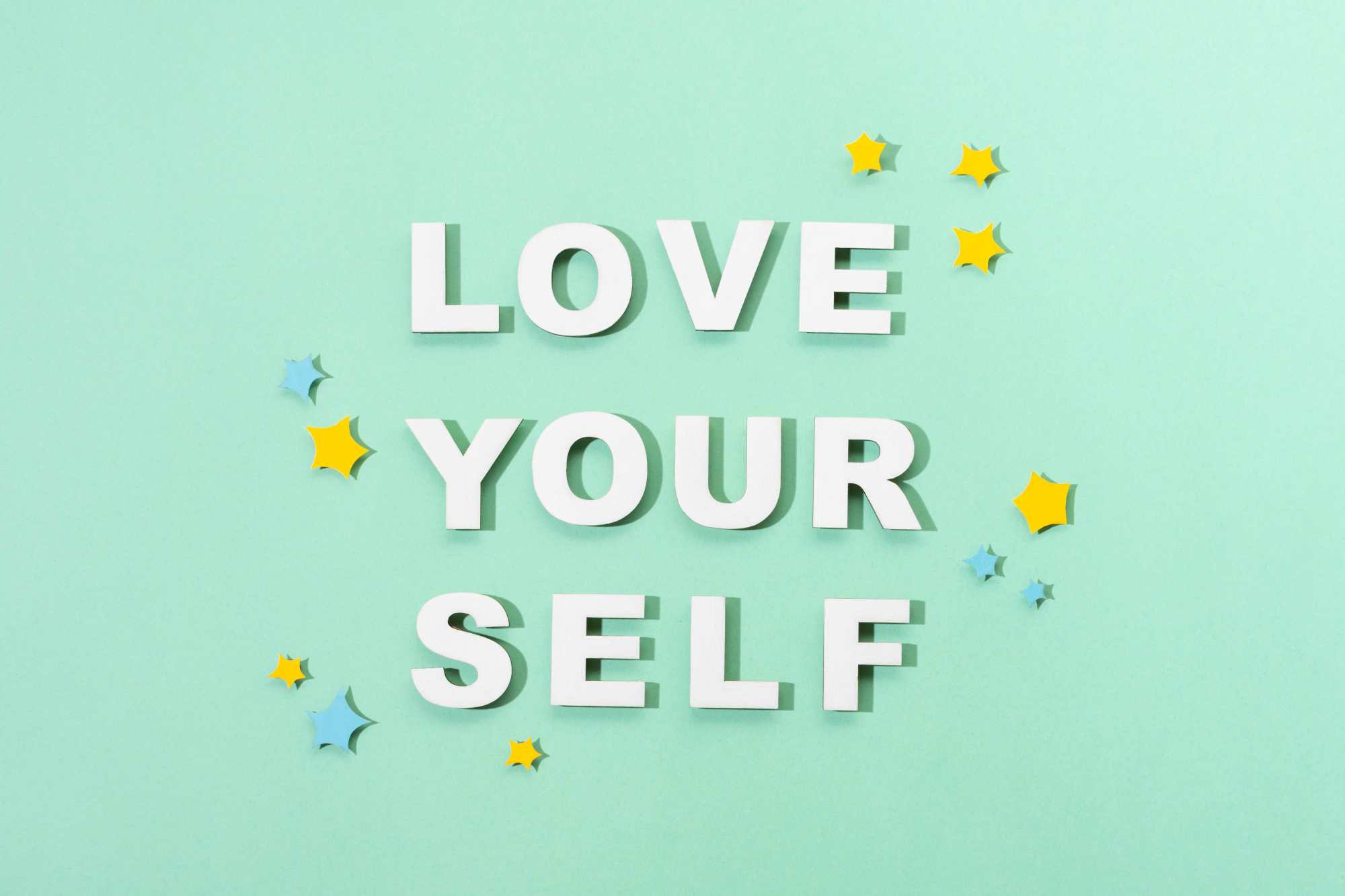
Phase 3: Develop your cheerleader’s specific responses
Your inner critic probably has a greatest hits collection of favorite insults and fears. Your inner cheerleader needs ready responses to these common attacks.
Create your cheerleader’s response library
Make a list of your inner critic’s most frequent criticisms. Then write out what your inner cheerleader would say in response to each one. For example:
Internal critic: “You’re not smart enough.”
Cheerleader: “Intelligence comes in many forms, and you have unique strengths. You don’t need to be the smartest person in the room to contribute value.”
Internal critic: “You’re behind in life.”
Cheerleader: “Everyone’s timeline is different. You’re exactly where you need to be for your journey.”
Internal critic: “You don’t deserve good things.”
Cheerleader: “You deserve love, respect, and happiness just like every human being. Your worth isn’t based on what you accomplish.”
Having these responses ready means you won’t have to create them in the moment when your critic is loud and your emotional defenses are down. If you’re struggling with reframes, these 7 reframes will help you turn your inner critic’s harshest attacks into supportive responses.
Develop cheerleader mantras
Create short, memorable phrases your inner cheerleader can use in difficult moments:
- You’re learning and growing.
- Progress, not perfection.
- You can handle this.
- This feeling will pass.
- You’re worthy of kindness.
- One step at a time.
- You’ve overcome challenges before.
Practice these until they become automatic responses you can access quickly when you need them.
Phase 4: Strengthen your cheerleader through visualization
Your brain responds to vivid mental imagery almost as strongly as it responds to real experiences. You can use this to strengthen your inner cheerleader’s voice.
The cheerleader visualization exercise
Sit quietly and imagine your inner cheerleader as a real person. What do they look like? How do they carry themselves? What’s their energy like?
Now imagine yourself in a situation where your inner critic usually gets loud – maybe before a presentation, during a difficult conversation, or after making a mistake.
Visualize your inner cheerleader standing beside you, speaking directly to you in their encouraging voice. Hear the specific words they would say. Feel the support and understanding in their tone.
Practice this visualization regularly, especially before situations where you know your inner critic tends to be harsh.
The successful future self visualization
Imagine yourself one year from now, having successfully developed a strong inner cheerleader voice. How do you move through the world differently? How do you handle challenges? How do you treat yourself when things don’t go as planned?
Let this future version of yourself speak back to your current self with wisdom, encouragement, and perspective. What would they want you to know? What encouragement would they offer?
This exercise helps you connect with the version of yourself you’re working to become, making it feel more real and attainable.
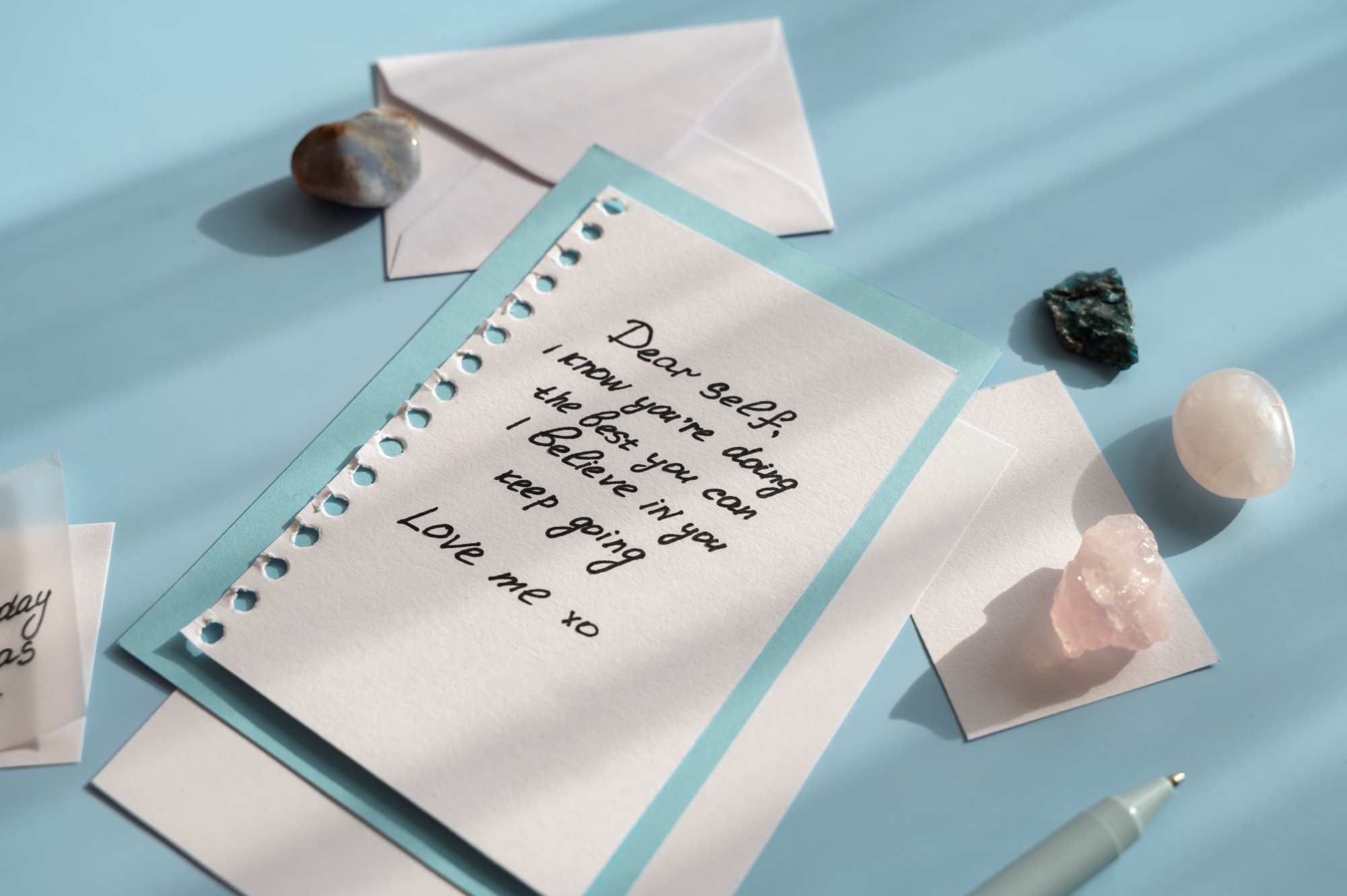
Making the shift permanent
Building an inner cheerleader isn’t a one-time project – it’s an ongoing practice. But there are specific strategies that help make this shift permanent rather than temporary.
Connect your cheerleader to your values
Your inner cheerleader becomes stronger when it’s rooted in what actually matters to you. If you value growth, your cheerleader can focus on learning from mistakes. If you value connection, your cheerleader can emphasize self-compassion as a way to be more present with others.
When your cheerleader voice aligns with your deeper values, it feels more authentic and sustainable.
Notice the real-world results
Pay attention to how your life changes as your inner cheerleader gets stronger:
- Do you take more risks?
- Do you recover from setbacks faster?
- Are you more present in relationships?
- Do you enjoy activities more?
- Are you more creative or productive?
Noticing these concrete benefits reinforces the practice and motivates you to continue.
Be patient with the process
Your inner critic took years to develop, so your inner cheerleader won’t reach full strength overnight. Some days your critic will still be louder. This doesn’t mean you’re failing – it means you’re human.
The goal isn’t to eliminate your inner critic completely (it sometimes has useful information) but to ensure your inner cheerleader is strong enough to provide balance and perspective.
The positive effects of a strong inner cheerleader
When you develop a supportive inner voice, the benefits extend far beyond just feeling better about yourself.
You become more resilient. Setbacks don’t devastate you because your inner cheerleader helps you maintain perspective and find the learning in every experience.
You take more meaningful risks. When you know your inner voice will support you regardless of the outcome, you’re more willing to try things that matter to you.
Your relationships improve. When you’re kinder to yourself, you’re naturally kinder to others. You also attract people who appreciate authenticity over perfectionism.
You become more creative. Creativity requires experimentation, which means accepting that not everything will work perfectly. A supportive inner voice makes this kind of exploration feel safe.
You model healthy self-relationship for others. Children, friends, and colleagues learn from watching how you treat yourself. Your inner cheerleader can influence their inner voices too.
You use your energy more effectively. Instead of spending mental energy fighting yourself, you can direct it toward your goals, relationships, and the things that matter most to you.
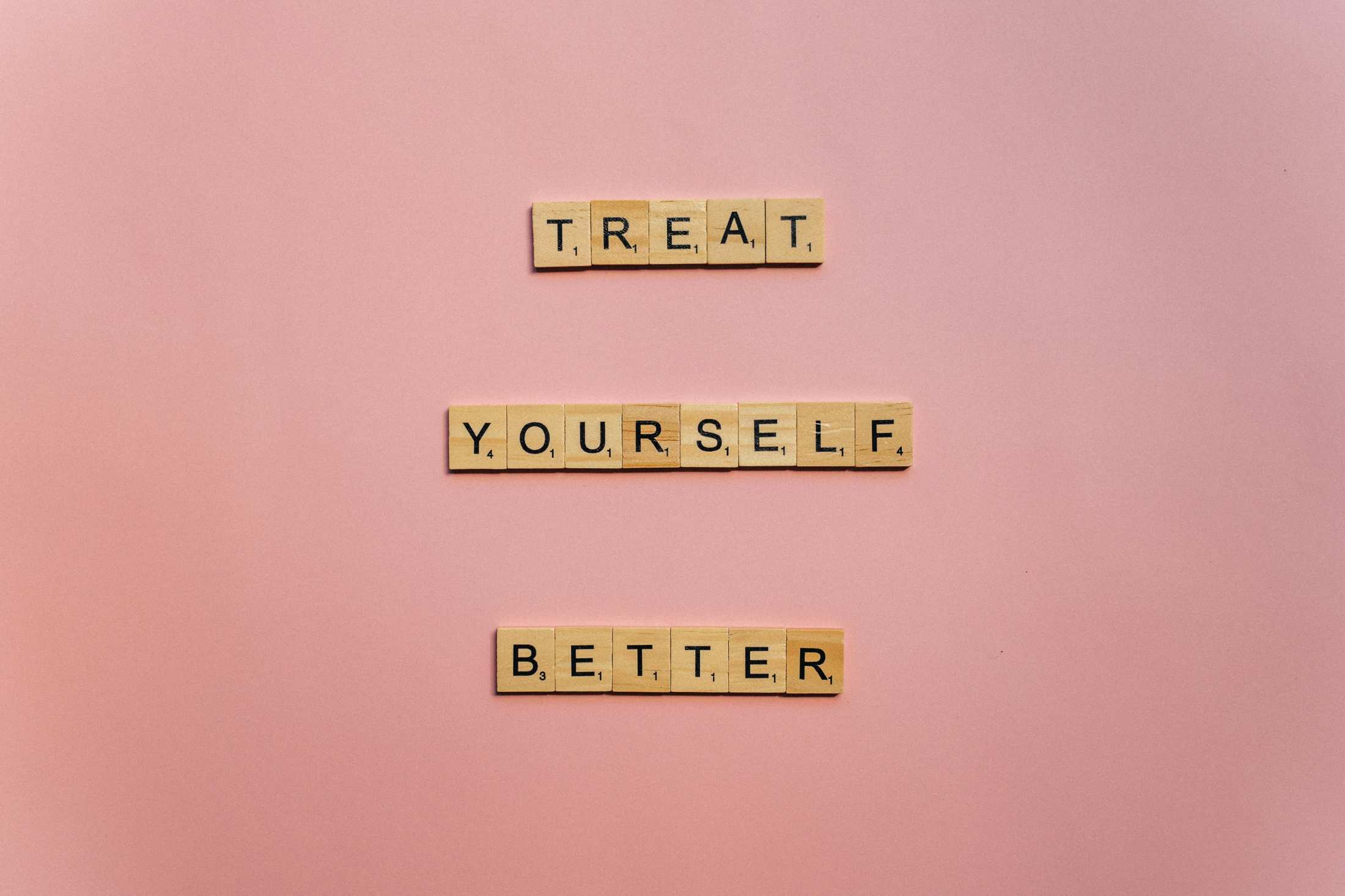
Your cheerleader’s message for today
As you begin this practice, your inner cheerleader wants you to know:
You don’t have to be perfect at developing an inner cheerleader. This is a practice, not a performance. Some days will be easier than others, and that’s exactly as it should be.
You deserve to speak to yourself with the same kindness you would show to anyone else you care about. This isn’t selfish or self-indulgent – it’s basic human dignity.
The voice in your head has tremendous power over your life experience. By choosing to cultivate a supportive inner voice, you’re taking control of one of the most influential factors in your happiness and success.
You already have everything you need to begin this practice. Your inner cheerleader is already there, waiting to be strengthened and heard.
The question isn’t whether you’re capable of developing a kinder inner voice – you absolutely are. The question is whether you’re willing to treat this practice as important enough to invest time and attention in.
Your future self – the one who moves through the world with confidence, resilience, and self-compassion – is counting on the choices you make today.
What will your inner cheerleader say to you today?
If this article resonated with you, the Become your own cheerleader workbook provides the complete system to turn these concepts into daily practice.
This 30-day guided workbook takes you beyond understanding the concept to actually building the skill. Each day includes reflection prompts, practical exercises, and specific actions to develop your inner cheerleader until it becomes as natural and automatic as your inner critic once was.
Your relationship with yourself is the longest relationship you’ll ever have. Isn’t it time to make it a supportive one?
Your journey toward a kinder, more supportive inner voice starts with the next choice you make. What will it be?

